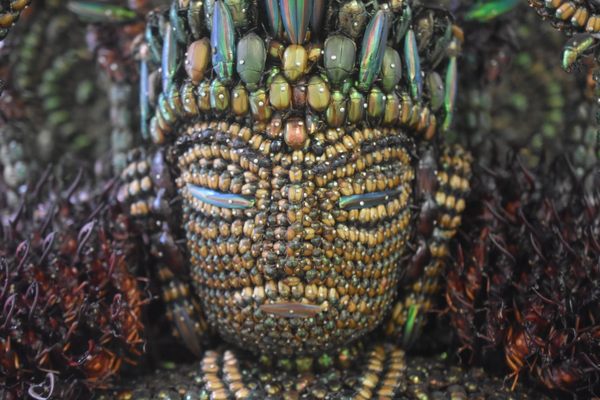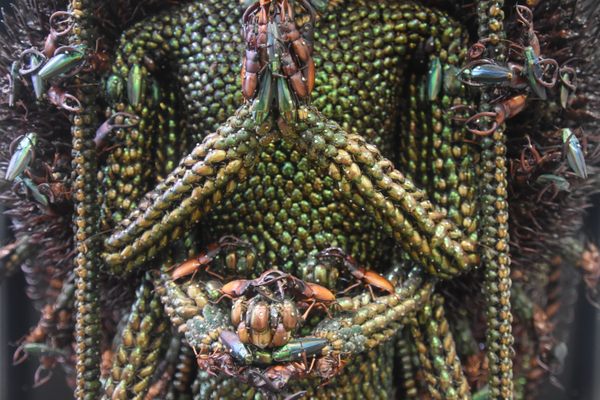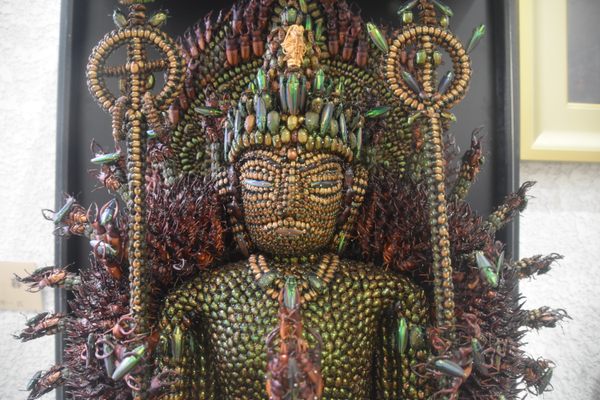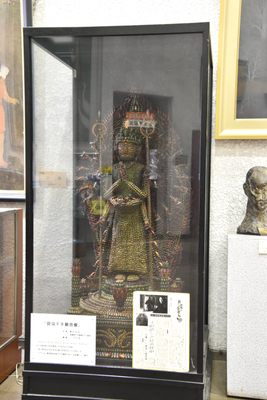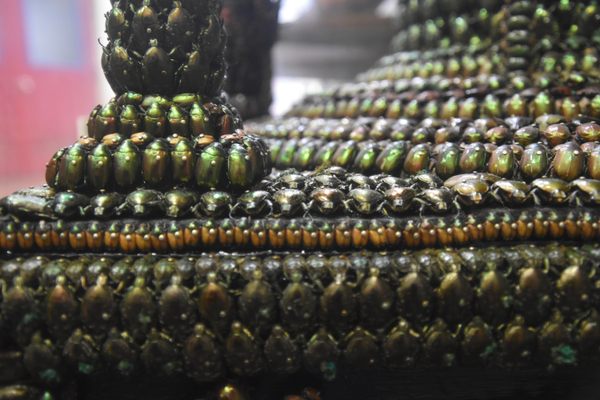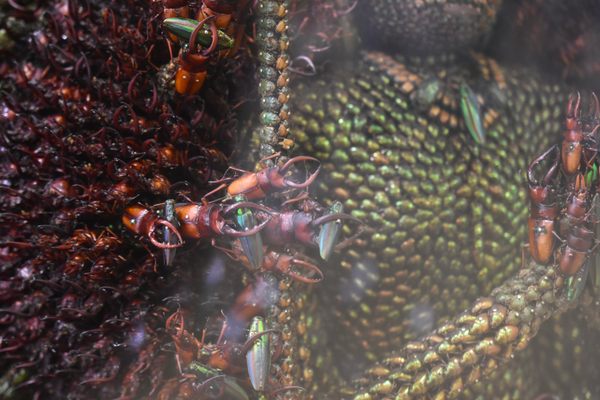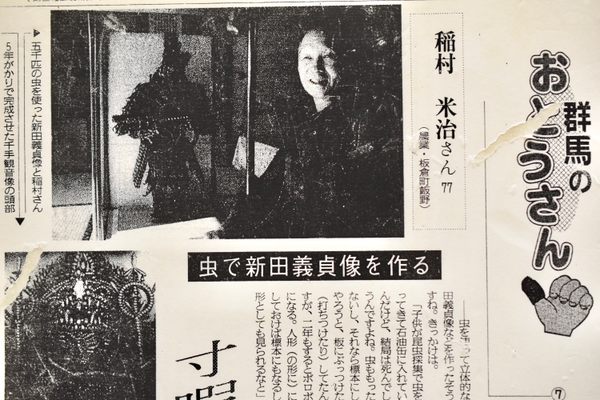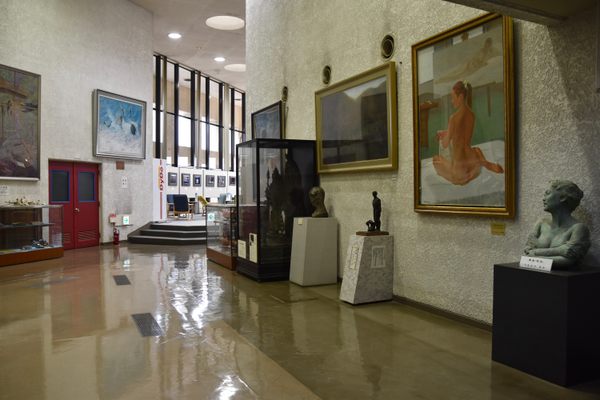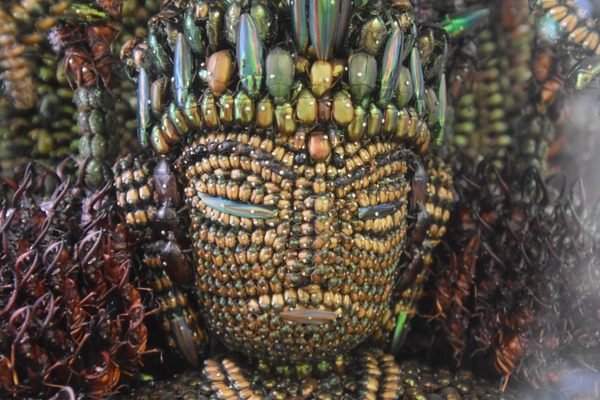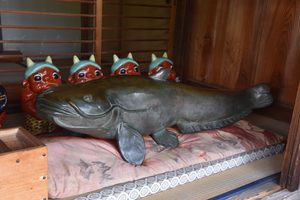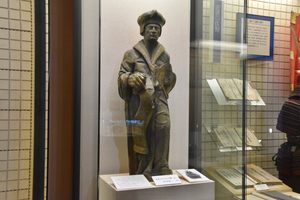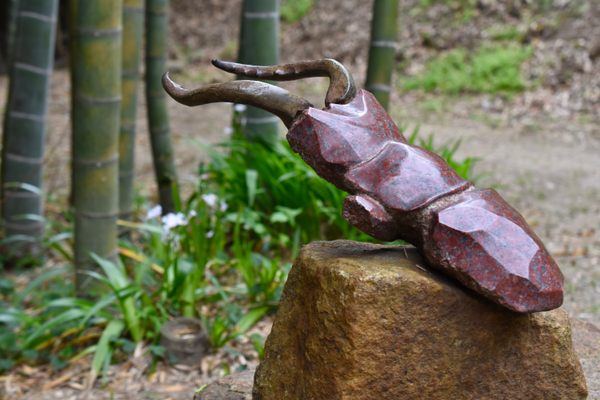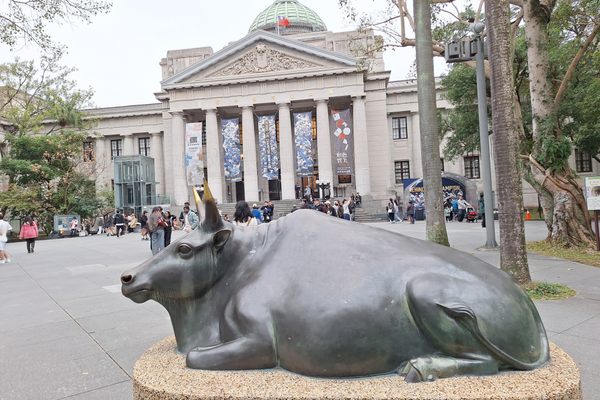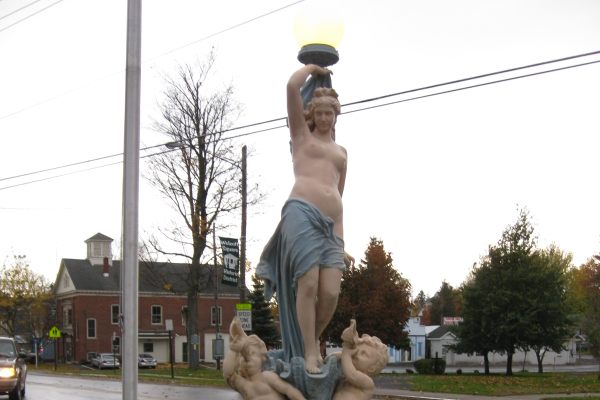About
In the township of Itakura, Gunma, a bizarre sculpture lurks in the sleepy, poorly-lit lobby of a local community center.
An eldritch entity composed of countless coleopteran corpses in the style of Oogie Boogie, the Konchū Senju-Kannon is the stuff of entomophobic nightmares. Haloed by the iridescent sheen of jewel beetles’ carapaces and crowned with a longicorn cocoon, the goddess sits on a throne of creepy-crawlies with the mandibles of stag beetles jutting out in every direction. At her feet, a swarm of drone beetles make up the pedestal, giving a bronze-green luster to it.
Neatly composed of over 20,000 insect specimens, the Konchū Senju-Kannon ("thousand-armed insect goddess of mercy") was created over a span of six years by one Mr. Inamura, an Itakura local who pursued the hobby of insect collecting. In Japan, the collector's typical game consists of different kinds of beetles, such as the rhinoceros, stag, and longicorn, quite common in the countryside.
Bright green with tints of rainbow, the jewel beetle has been highly valued for its rare beauty since antiquity, most notably used in the eighth century to make the Tamamushi Shrine of Hōryū-ji. No doubt inspired by this National Treasure, the goddess of Itakura is also modeled after the Kannon statue enshrined at Tōshōdai-ji Temple.
Perhaps ironically, this particular statue is dedicated to all the lives of insects lost at the hands of mankind, be it a victim of pesticide or specimen-making. Known as mushi-kuyō, the practice of memorializing insects is not itself an uncommon tradition in Japanese Buddhism (as seen in Ueno and Kamakura) if not as elaborate as the Insect Goddess.
Depending on the viewer, the goddess may be breathtaking or stomach-turning, exquisite or eccentric, a work of goodwill or hypocrisy. Regardless of your opinion, she continues to sit in the shadows in a perpetual state of prayer, full of mercy towards the little creatures.
Related Tags
Know Before You Go
To get to the Itakura Central Community Center, first get to Itakura Tōyōdai-mae station on a Tōbu-Nikkō Line train, then take the Tatebayashi-Itakura Line bus towards Tatebayasi.
The community center's lobby is freely accessible from 9 a.m. to 9 p.m., open every day except Mondays. Once there, the Insect Goddess is not too difficult to spot.
Hidden Japan: Sado Island, Nara & Kyoto
Explore a different side of Japan.
Book NowCommunity Contributors
Added By
Published
August 30, 2023
